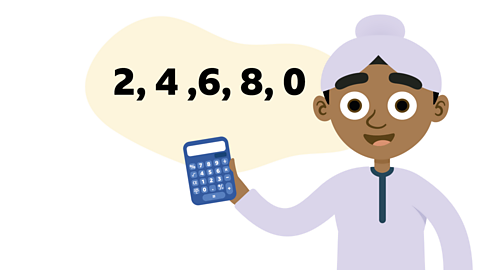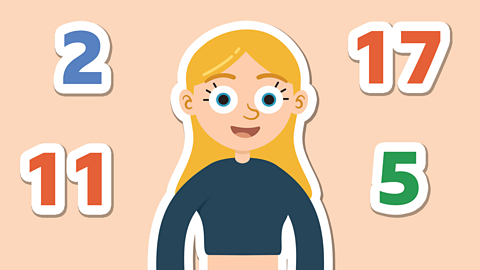Watch: What are factors?
Factors divide into other numbers exactly, with no remainders.
Take these eight tasty ants for example. They can be divided into one group of eight.
But we can also divide eight into two lots of four.
So the factors are one, two, four and eight.
But if the ants want to hang out in threes, it will cause a few problems.
Eight won't divide into three equal groups. There's always a couple left on their own.
So three is not a factor of eight.
I don't think our hungry anteater was expecting any leftovers.
How do we use factors?
Factors are numbers that divide exactly into another number.
For example, the factors of 8 are:
1, 2, 4, 8
Factors can be shown in pairs. Each pair multiplies to make 8.
The factor pairs of 8 can be shown:
1 x 8 = 8
2 x 4 = 8
Watch: What are multiples?
Multiples of 2

Multiples are really just extended times tables.
The multiples of 2 are all the numbers in the 2 times table, such as 2, 4, 6, 8, 10 and so on.
Multiples of 2 always end with:
2, 4, 6, 8 or 0
You can tell 2286, for example, is a multiple of 2 because it ends with a 6.

Multiples of 5

The multiples of 5 are all the numbers in the 5 times table, such as 5, 10, 15, 20, 25 and so on.
Multiples of 5 always end with
5 or 0
You can tell 465, for example, is a multiple of 5 because it ends with a 5.

Watch: Multiples of 3,6,7,8 and 12
Activity 1
Activity 2
Teaching resources
Looking for a way to bring the magic of maths to your classroom? This short animated film is from the BBC Teach Series, Hypatia's Mathematical Maze, and introduces the concepts of factors, multiples and primes.
BBC Teach has thousands of free, curriculum-linked resources to help deliver lessons - all arranged by subject and age group.
Play Guardians: Defenders of Mathematica to get ready for SATs. gamePlay Guardians: Defenders of Mathematica to get ready for SATs.
In this game, use the times tables and more maths skills to defeat monsters and reclaim the Kingdom.

More on Factors, multiples and primes
Find out more by working through a topic
- count3 of 3

- count1 of 3
